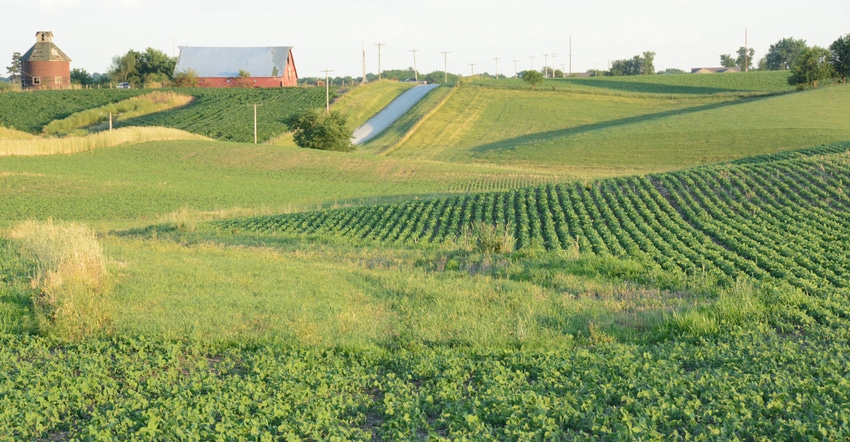January 3, 2020

Editor’s note: This is the first in a three-part series on water in Illinois. Read Part 2 here and Part 3 here.
I was happy to put the 2019 crop year behind us. Excessive precipitation caused rampant flooding throughout the heartland. Even after floodwaters receded, we had to contend with wet field conditions. Stories of flood damage to homes and property, including the land itself, were heart-wrenching. If you experience the devastation of a flood, there’s little consolation in knowing you are not alone.
Yet, humans need water to survive. Not only do our bodies need it, but water provides habitat for much of the food we eat. Water also provides us with travel channels for commerce. It can be great for recreation and nice just to look at, too. For all these reasons, we like to live near water. Water is essential, but it is also heavy and powerful. It can change the face of this planet dramatically. Water can wear down mountains, carve deep valleys and move sediment great distances.
Yes, floods can cause immediate and dramatic changes to the land, but water’s incessant movement also creates changes over time. Our largest Midwestern rivers and streams seem sluggish when compared to the Grand Canyon-carving Colorado River, but even they have transformed our landscape dramatically — and they haven’t stayed politely in their beds while doing it.
Too often we think of the river only as it exists in its normal bank-to-bank channel. We fail to recognize the flat zones on either side of the main river channel, the flood plain. However, the river constantly reminds us that it created that flood plain, and that flood plain is also part of its channel. It has meandered throughout that flood plain for ages, flattening the landscape and laying down rich layers of soil. That same process gave us the cradle of civilization along the Nile.
We learned to live along the banks and shores of these water bodies, but it’s the water that is still in charge. In case we forget, we get constant reminders. One dramatic incident in Illinois history was in 1881, when the force of rising water took a shortcut across a meander. The new course left Kaskaskia, then Illinois’ capital, stranded on an island. To this day, you must access this historic town from Missouri. The Mississippi isn’t the only river that feels free to move around. The beautiful Cache River swamp across the southern portion of the state is actually the cutoff channel of the Ohio River from more than 8,000 years ago.
Much of the region still shows geologic signature of rivers and streams that have changed course. We even have the remnants of large lakes created by glacial meltwaters that eventually broke through their natural dams. Even though lake waters do not have the force of flowing water, wave action constantly batters the shore. Erosion can wear down points and fill in shallow areas to drastically reform the shoreline.
Humans often try to keep things just like they are now. Sometimes we are successful — for a while — but more often, our efforts are overcome by some extreme natural event or just lack of maintenance. I marvel at how often I hear someone talk about how long they’ve been in a certain place and they’ve never seen water as high, or as low, or as fast, yet the spot is in a geologic flood plain.
Please don’t misunderstand, I’m not unsympathetic to those who have suffered losses. I also understand the economic importance of building levees and dams; maintaining shorelines, beaches and navigable channels; and building homes near bodies of water. I just want to make sure we all go into it with our eyes wide open and with an understanding that even though we might not have seen it, the land tells a story that it has certainly seen the water there before.
Dozier is the Illinois state conservationist. Direct comments or questions to [email protected].
About the Author(s)
You May Also Like




